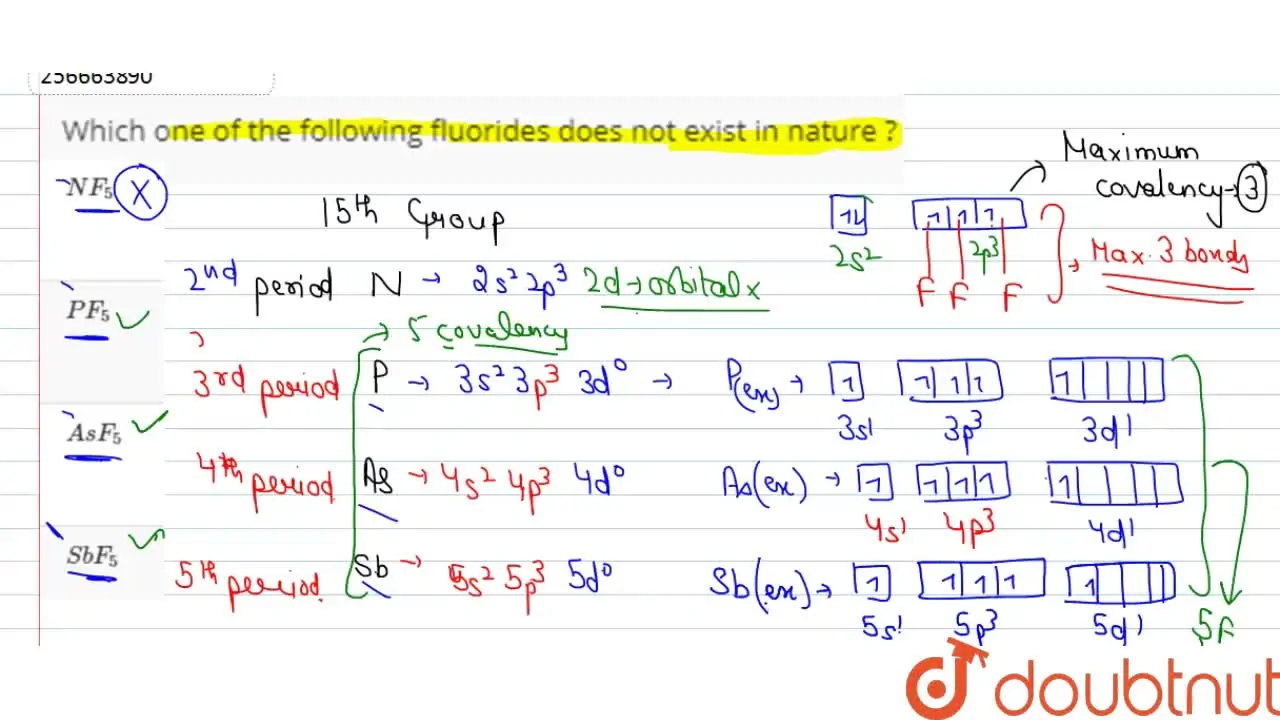Which one of the following fluorides does not exist in nature ?
A
B
C
D
Video Solution
Text Solution
The correct Answer is:A
|
Answer
Step by step video, text & image solution for Which one of the following fluorides does not exist in nature ? by Chemistry experts to help you in doubts & scoring excellent marks in Class 12 exams.
Updated on:21/07/2023
Similar Questions
Which of the following flourides does not exist?
View SolutionWhich of the following Xenon fluoride does not exist ?
View SolutionWhich one of the following compounds does not exist?
View SolutionWhich of the following halide does not exist
View SolutionWhich one of the following elements does not exist in the native form ?
View SolutionWhich of the following halides does not exist ?
View SolutionWhich out of the following compound does not exist?
View SolutionWhich one of the following does not exist?
View SolutionWhich one of the following does not exist?
View SolutionWhich one of the following does not exist?
View Solution


